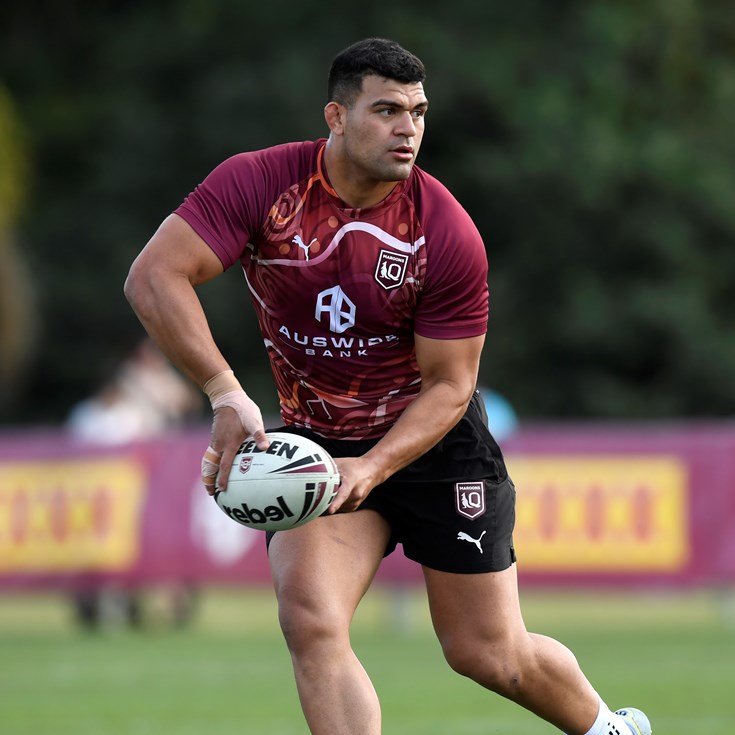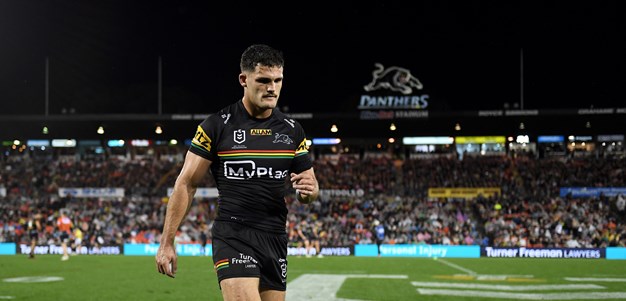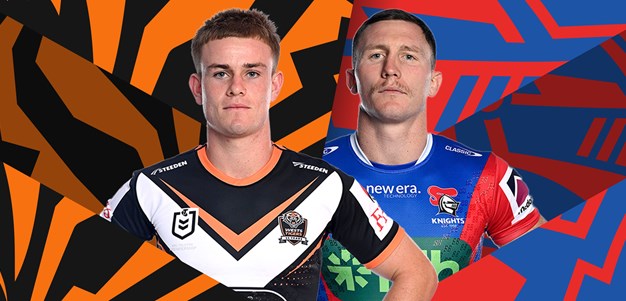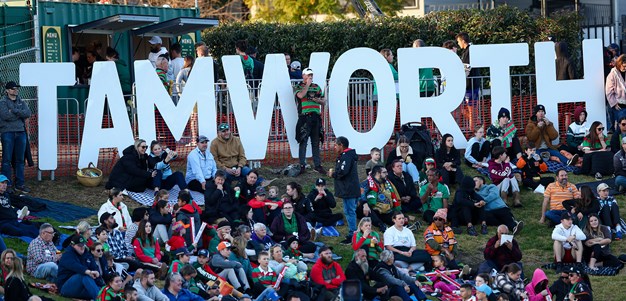
There are more than twice as many playmaker changes for sides that finished outside the top eight in 2018 than for those that made the finals, but how detrimental are spine changes to a team's hopes of making the playoffs?
Conventional wisdom would have it that a settled playmaking roster is a big advantage, with new combinations usually taking a while to gel.
However, crunching the numbers for the past two seasons, NRL.com Stats shows the more settled sides heading into 2018 actually performed more poorly while the teams that finished in last year's finals series on average had more changes in key positions.
Further, there was a strong relationship between teams making the most changes improving their ladder finish compared to 2017, with the more settled spines dropping down the ladder.
Changes heading into 2018
The four teams that finished on equal-most ladder points in 2018 – the Roosters, Storm, Rabbitohs and Sharks – averaged just over one change per team with the Roosters bringing in James Tedesco and Cooper Cronk for Michael Gordon and Mitch Pearce, while the Storm had to replace Cronk with a rotating cast before settling on Brodie Croft, the Bunnies switching from a two-hooker policy led by Robbie Farah to Damien Cook as sole dummy half, and the Sharks replacing James Maloney with Matt Moylan.
However the next four teams on the ladder – the Panthers, Broncos, Dragons and Warriors – averaged almost two changes per team, largely due to major (and in part injury-affected) upheaval at Penrith.
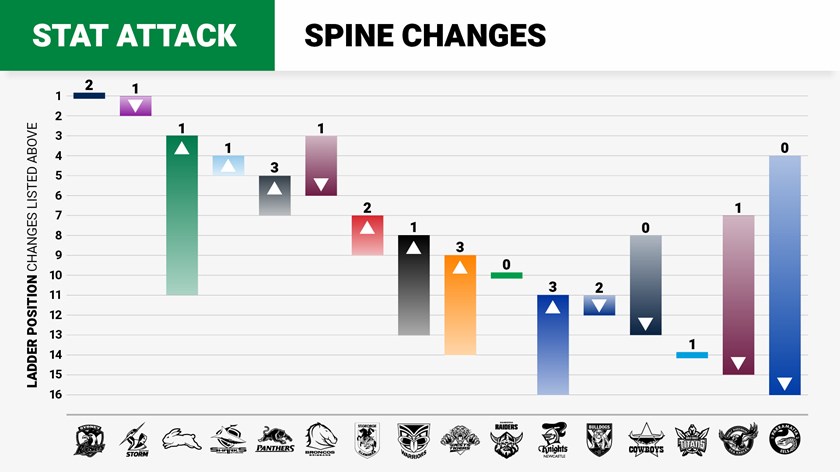
The next four sides – Wests Tigers, Canberra, Newcastle and Canterbury – averaged two spine changes per club with a settled Canberra the odd team out while the other three were almost unrecognisable from 2017.
The bottom four sides – North Queensland, Gold Coast, Manly and Parramatta – were the most settled of all 16 clubs.
The Eels, almost inexplicably, dropped 12 ladder spots from 2017 with the same spine that guided them to the top four a season earlier while the Cowboys also had no changes to their preferred spine (though they did have to deal with a long-term injury to Michael Morgan mid-season).
Manly had to replace five-eighth Blake Green and the Titans fullback Jarryd Hayne, but in all there were just two changes for an average of 0.5.
The top eight averaged 1.5 spine changes per club while the bottom eight was slightly more settled at 1.25 per club.
Interestingly, of the six clubs with two or more spine changes, all improved their ladder finish in 2018 compared to 2017 other than Canterbury, who dropped just one spot but had ongoing upheaval throughout the season with Moses Mbye departing and Kieran Foran getting injured.
Newcastle and Wests Tigers each made three changes and improved five spots while the Panthers also had three changes and rejoined the finals zone.
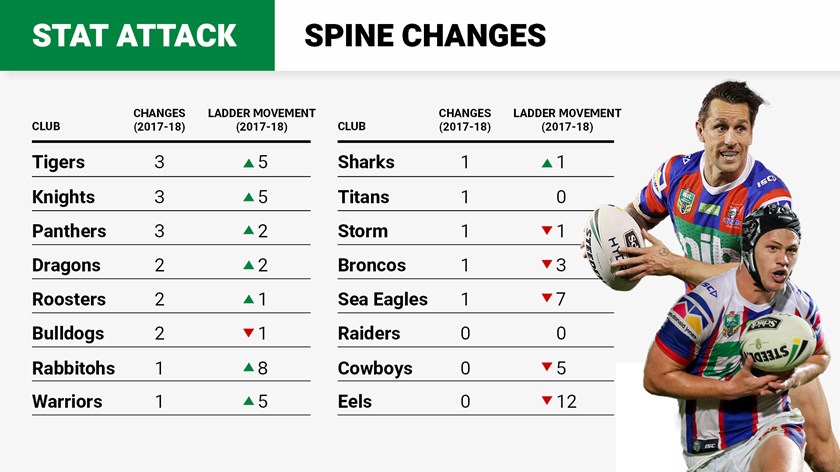
The two teams who entered 2018 with an unchanged spine from the previous year, Canberra and Parramatta, were both winless after four rounds and while Canberra ended up matching 2017's 10th-place finish, the Eels dropped 12 spots from fourth to 16th.
Of course, the quality of players coming and going from each playmaking roster will have a far bigger influence over a club's success than the total number of changes. The teams that either improved markedly from the previous year (Souths, Warriors, Wests Tigers, Newcastle) or performed strongly (Roosters, Storm, Sharks) had high-calibre performers either join or remain in the spine.
Quality the main factor
The Roosters are a good example - they had two significant spine changes and they did have a settling in period, going 4-4 through the opening eight rounds before finding their groove. But with a superstar spine they were bound to click and duly did.
Melbourne's 2017 line-up of Billy Slater, Cameron Munster, Cooper Cronk and Cameron Smith had both quality and continuity on their side. Cronulla a year earlier found James Maloney to be the missing ingredient with Ben Barba, Chad Townsend and Michael Ennis.
The 2015 Cowboys had both quality and continuity on their side, the Bunnies in 2014 found Luke Keary to be the missing ingredient (though they had to also overcome a one-game ban to hooker Issac Luke for the grand final).
Going back to 2007 there were three grand final wins to the Storm with a similar and world-class spine; two for Manly with Daly Cherry-Evans the only change in 2011; none in '08 following Matt Ballin's emergence in '07; the Roosters in 2013 added Maloney as the missing ingredient while the 2010 Dragons had the same dominant line-up as the previous year.
Changes heading into 2019
This time around it is the teams that missed out last year making the majority of changes, with the 2018 top eight set for as few as six total spine changes, while the bottom eight are headed for at least 13.
Whether those changes pay off as it did for many 2018's finalists remains to be seen.

